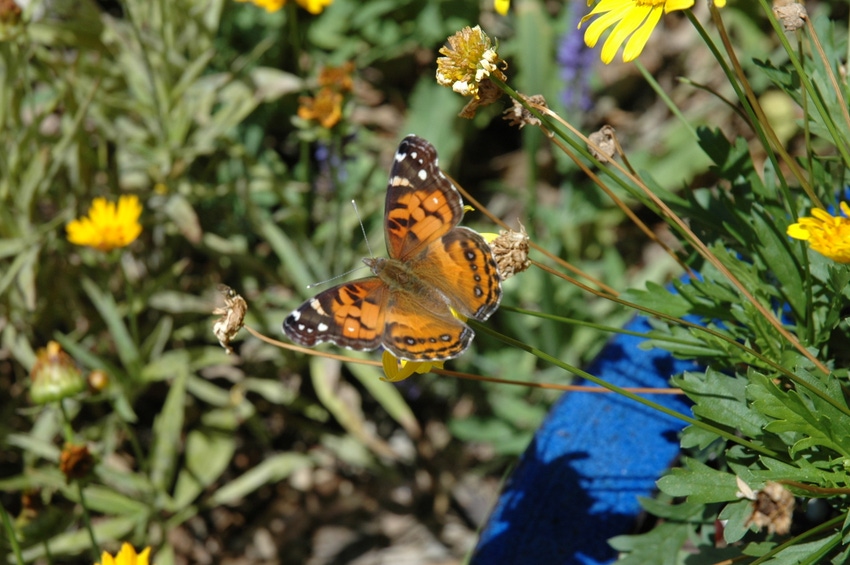
According to the results of a new study published in the journal Agriculture, Ecosystems & Environment today (June 16, 2016 issue), South Texas cotton fields surrounded by natural land cover and an increase in the number of natural pollinators can result in an overall increase in cotton production – by as much as 18 percent.
Shalene Jha, assistant professor of integrative biology at the University of Texas-Austin and senior author of the study, says increasing the diversity of pollinator species around cotton fields—including bees, flies and butterflies—can dramatically increase yields. Using South Texas as a basis for the study, she concludes that annual cotton revenues of the region can be increased by more than $1.1 million.
For the latest on southwest agriculture, please check out Southwest Farm Press Daily and receive the latest news right to your inbox.
“Texas produces about 25 percent of the nation's cotton and South Texas produces about 15 percent of the state's total. Cotton is the world's most economically valuable nonfood crop,” Jha reports.
Increasing yields through diversified pollinator populations could prove to be a major boost to South Texas cotton production, and potentially for cotton producers across the state. According to the study, which focused only on South Texas cotton fields, pollinator populations and crop conditions vary widely across Texas. But the pollinator factor could prove beneficial for other areas of the state and beyond.
POLLINATOR ZONES
Researchers say even if a cotton field is not located adjacent to natural land cover, farmers can create pollinator zones by planting a row of wildflowers between rows of their crops or even on the edges of the crop field. In addition, farmers can introduce flowering crops into the crop rotation and reduce pesticide spraying, especially during daytime hours.
Researchers involved in the study say though cotton may potentially benefit from animal mediated pollination, it is unknown if the species is indeed pollen limited across agroecological landscapes.
“Our study had three objectives: 1)identify the land use attributes that affect wild pollinator abundance and diversity; 2) investigate the relationship between pollinator community composition and cotton pollen limitation: 3) determine the extent of direct and indirect effects of land use on pollinator community composition and pollination service,” the study notes.
Overall, study results indicate the potential for increased crop yields via wild pollinator-mediated fruit set.
"Our research provides insight into the specific land management practices that support pollinator communities within cotton agroecosystems. Cotton landscapes that maintain natural areas promote wild pollinator abundance and diversity, and subsequently experience reduced pollination limitation and increased crop yields," Jha noted.
“We’ve shown multiple benefits to biodiversity,” she added. “With the right management, cotton farmers can have higher crop yields and support native plants and animals.”
In addition to Jha, the study's authors included Sarah Cusser, a Ph.D. candidate at UT Austin; and John Neff, director of the Central Texas Melittological Institute.
INCREASED REVENUE
Researchers estimate that in Texas, the boost in crop yield due to increased pollinator diversity would translate to an increase in annual revenue of $108 per acre.
The study focused on 12 field sites representing a wide range of landscapes across South Texas. The researchers netted pollinators foraging on cotton plants and determined their abundance and diversity; analyzed geographic information system (GIS) data derived from satellites and other sources to map landscape types; and conducted hand-pollination experiments.
Jha says the cotton plant, which produces large flowers that later develop into the white fiber for which it is known, is able to produce cotton without pollinators to a certain extent, mostly by using its own pollen. However, by introducing pollinators, the pollen from one plant is spread to others, and this increases cotton yield significantly.
“One key reason that a large diversity of pollinators is beneficial is that cotton blooming does not perfectly coincide with the most active times of the European honeybee, one of the most common pollinator species. Therefore, having a variety of native pollinators would allow more pollen distribution — a necessary step in production of the harvestable cotton bolls.”
Research for the study was funded in part by the Texas Parks and Wildlife Department, the U.S. Army Research Office, the National Science Foundation, and the Winkler Family Foundation. Work was done in collaboration with the Welder Wildlife Refuge and the Texas A&M AgriLife Extension Service.
About the Author(s)
You May Also Like




